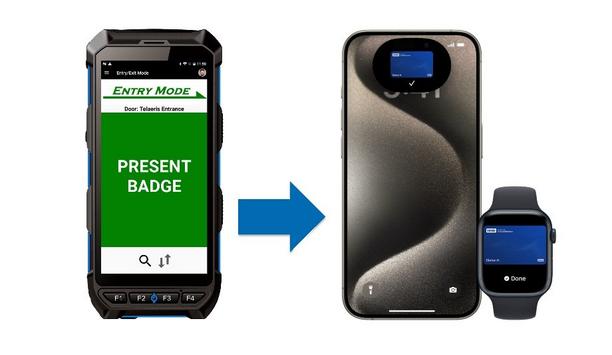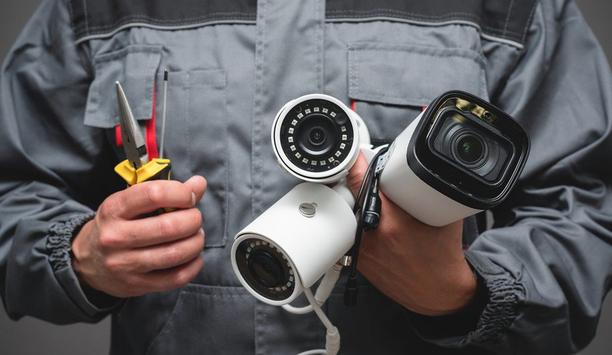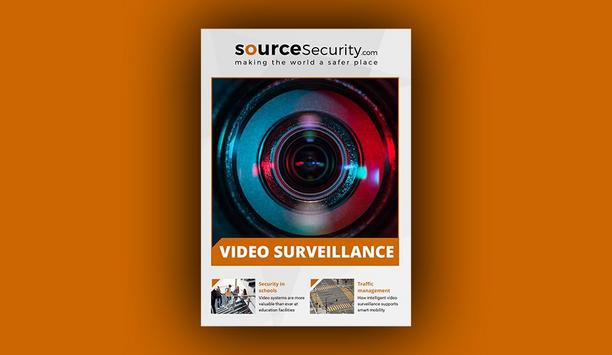How does technology contribute to the security of public events?
Editor Introduction
Technology offers a range of tools to bolster security at public events, including before, during, and after. This year, the 2024 Summer Olympics in Paris will draw the attention of the world, requiring the best protection available for the venues, the athletes, and the attendees. Other happenings such as the FIFA World Cup, the Super Bowl, the Tour de France, and the U.S. NBA Finals are momentous events that challenge security and law enforcement personnel to keep them safe. We asked this week’s Expert Panel Roundtable: How is technology contributing to security in the arena of public events?
Technology significantly bolsters security at public events through advanced surveillance, access control, and communication systems. High-resolution IP cameras, drones, and facial recognition enhance real-time monitoring, aiding in threat detection. Access control technologies, such as biometric scanners and secured credentials ensure bad actors are kept at bay, while data analytics and AI analyse patterns for anomaly detection. Rapid communication platforms facilitate coordinated responses among security teams and law enforcement, while emergency notification systems keep attendees informed during critical situations. Cybersecurity measures protect digital infrastructure, and smart access management adjusts permission dynamically. Biometric identification enhances identity verification, and mobile apps empower attendees to report incidents. Overall, technology creates a layered security approach, mitigating risks and ensuring the safety of participants in public events.
Technology increasingly plays a pivotal and comprehensive role in enhancing events management: From heightening safety and security, preventing vandalism and hooliganism, and delivering critical real-time situational awareness to providing traffic and crowd insights, event managers are realising the full scope of their security tech stack for evolving applications. Increasing control, accelerating responsiveness, and democratising data access ensure safety teams can stay ahead of potential challenges. Events, such as the upcoming Paris Olympics, highlight the importance of managing mass attendance across an expansive landscape. By integrating and relying on artificial intelligence (AI) and CCTV technologies, security personnel are empowered with more visibility for faster decision-making and emergency response. These technologies will also support rapid incident analysis both for immediate investigations and long-term strategy improvements to increase ongoing effectiveness. A technology-driven approach ensures a comprehensive safety net that guarantees security and the guest experience, while also balancing the critical role of human security personnel with the responsible use of tools and tactics.
Public safety may be one of the biggest concerns in the security industry today. Over the last two decades, we have had to focus more heavily on improving the safety and security of events, city spaces, and the public in general. From the first body scanner implemented by the Transportation Security Administration (TSA) to the incorporation of AI technology into video surveillance, new technologies aim to enhance current procedures and systems. AI can lead to new ways of detection, rapid response, and protection in real-time events and environments. The goal of using AI-enhanced security to secure public spaces is needed now more than ever. The security landscape is moving towards a future focused on proactive and active deterrents of threats to public safety. The most exciting part to me is that advancements in AI technology can improve systems already in place, making adoption simple.
Command and control vehicles bring much-needed technology to public events, which often occur on sites lacking integrated infrastructure and communication systems. Mobile Commands create a robust Security Operations Centre (SOC) onsite, complete with onboard communication systems, video surveillance, drone detection, and real-time situational awareness from social media, local emergency services, weather sensors, and other sources. Events rated a Level 1 or 2 on the U.S. Department of Homeland Security’s Special Event Assessment Rating (SEAR) qualify for support from federal and state agencies that provide a Mobile Command presence. However, smaller events often face budget constraints that make access to a top-notch Command and Control vehicle a significant barrier. A new option, “Mobile Command as a Service” (MCaaS), empowers event security teams with badly needed resources they could otherwise not afford. Just as companies invest in fractional jet ownership, MCaaS provides access to a fully equipped, state-of-the-art Mobile Command for a specified number of engagements a year. In this way, technology is helping protect the public at parades, concerts, conventions, sporting events, and other gatherings where bad actors might otherwise exploit vulnerabilities and threaten lives.
A crucial part of securing public events is to raise situational awareness for event operators and law enforcement so they can keep the event going as planned. AI-based crowd detection and people counting are examples of analytics that can help manage large crowds and monitor the flow of people in real-time. Sending automated alerts to security and law enforcement when fire or smoke is detected can prevent damage and injury from becoming widespread. Is a vehicle present in a pedestrian-only area? Getting instant alerts from AI cameras helps validate and prioritise an appropriate response. AI also helps operators search across video streams for persons of interest using specific attributes such as the color of clothes, objects carried or worn, long/short hair, shoe colour, and more. AI-enabled cameras allow security teams to adopt a more proactive posture in response to imminent threats, making them much more efficient and effective when seconds count.
Technology plays a pivotal role in enhancing security at public events. From ticketing to parking management, venues, and communities utilise digital solutions to ensure an enjoyable experience while prioritising safety. This requires communication among multiple stakeholders. The event team, local businesses, government agencies, and first responders work together to create an environment of situational awareness and cohesive response during the event. A unified physical security platform that combines security systems with other event safety solutions plays a fundamental role in ensuring effective collaboration. Teams can use data from the unified platform to gain actionable insights and respond appropriately quickly. By embracing a unified, comprehensive security strategy, security teams can proactively safeguard attendees, assets, and personnel. Thus, they can more effectively foster safe, secure, and memorable public events.
Technology plays a crucial role in enhancing security measures for public events, enabling organisers and security personnel to better protect attendees and respond effectively to any potential threats or emergencies. Gone are the days when event security was solely about gates, guns, and guards. Today, it is imperative to use technology to detect threats ahead of time. You want to be aware of early indicators and threatening chatter. You want to avoid major incidents at the event, and you cannot do any of that without technology. You need to utilise OSINT (Open Source Intelligence) to detect, validate and act on potential threats. Moreover, technology allows you to do site assessments in an expedited fashion. You can look at critical incidents and chatter happening near and around your event location within seconds. Finally, technology allows you to escalate the threats you’ve detected and any other digital investigations to enforcement entities to manage trends and build more predictive insights to future-proof your event protection plan. I see technology as a partner to physical security. The technology identifies the intelligence your security teams need to be ready and equipped to protect event attendees, event principals, and physical buildings.
The security and safety of today's major sporting events are highly dependent on Radio Frequency Indentification (RFID) solutions for controlling the ticketing and crowd-management experience. Two key learnings emerged from successful HID deployments at the past three FIFA World Cups. The first is the value of going well beyond the ticket itself to include real-time monitoring for crowd-management analytics and post-event continuous-improvement insights. Second, deployment intangibles are increasingly important, including the solution provider's experience in anti-counterfeiting technology, on-site troubleshooting, and managing the growing interconnectedness of today's modern event ticketing processes. The industry's focus is turning to integrated Event Management Platforms (EMPs) that: 1) cover, at minumum, an outer - and inner-perimeter layer at each venue; 2) provide all necessary hardware for secure and smooth traffic flow and a positive fan experience; and 3) support all ticket types including mobile, paper and, in the future, NFC tickets on the secure element of a phone or even a smartwatch.
Editor Summary
It's important to remember that technology is a tool, and its effectiveness depends on how well it is implemented. Protecting public events involves the deployment of a range of security solutions, such as video surveillance, access control, communication systems, and even drones. For large events, crowd detection and people counting become more important. With the implementation of artificial intelligence and biometrics solutions, privacy concerns and responsible data management are critical considerations.
Which of the following factors is the most important when it comes to securing a public event?
- Related links
- Magnetic Stripe Access control cards/ tags/ fobs
- Bar Code Access control readers
- Card Access control cards/ tags/ fobs
- Biometric Access control software
- Event Network video recorders (NVRs)
- ANPR Software CCTV software
- Card Access control software
- Real Time Network video recorders (NVRs)
- Area Lockout Option Access control software
- Control Software CCTV software
- Biometric Access control readers
- PC-based Access control readers
- Mifare Access control cards/ tags/ fobs
- Card Swipe Access control readers
- Standalone Access control readers
- Proximity Access control cards/ tags/ fobs
- Detection Software CCTV software
- Contact Access control software
- Drawing Software CCTV software
- Real Time / Timelapse Network video recorders (NVRs)
- Mifare Access control software
- Tag Access control cards/ tags/ fobs
- Standalone / Networkable Access control readers
- Smart Card Access control cards/ tags/ fobs
- Infrared Access control readers
- Proximity Access control software
- IP Surveillance Software CCTV software
- Smart Card Access control software
- Management Software CCTV software
- Magnetic Stripe Access control readers
- Central Monitoring Option Access control software
- Recording Software CCTV software
- Proximity Access control readers
- Monitoring Software CCTV software
- RFID Access control readers
- Surveillance Software CCTV software
- Smart Card Access control readers
- Face Recognition Software Access control software
- ID Badging Software License Access control software
- Keypad Commands/Intrusion Zones Access control software
- License Access control software
- Video Detector Video signal devices & accessories
- Video Level Indicator Video signal devices & accessories
- Video Signal Generator Video signal devices & accessories
- Visitor Management tool Access control software
- Genetec CCTV software
- Genetec Access control software
- HID Access control software
- Progeny Access control software
- HID Access control readers
- Progeny Access control readers
- Progeny Electronic locking devices
- Genetec Network video recorders (NVRs)
- HID Access control cards/ tags/ fobs
- Progeny Electronic keypads
- Progeny Access control cards/ tags/ fobs
- View all news from
- Gallagher Security
- HID
- Genetec, Inc.
- BriefCam
- Sentinel Consulting
- i-PRO
- Evolon
- Navigator - Powered By LifeRaft
Expert commentary
Security beat
Security bytes
- Getting to know Dan Grimm, VP and General Manager of Computer Vision at RealNetworks
- Big wins and the importance of showing up: Insights from SourceSecurity.com editor Larry Anderson
- Setting goals, business travels and radioactivity: Success secrets from Tiandy's John van den Elzen
- Getting to know Jeff Burgess, President/CEO at BCDVideo
Mobile access articles
HID, a worldwide pioneer in trusted identity and physical access control solutions, announces the 2024 State of Physical Access Control Report, identifying five key trends that are shaping the future...
Telaeris, Inc., a pioneering provider of handheld solutions for Physical Access Control Systems (PACS), announces its new XPressEntry handheld badge and biometric reader support for all HID Mobil...
Centrios, a new brand created within ASSA ABLOY to serve the small business market, announces their first shipment of hardware products to SECLOCK. Centrios is a cloud-based access control solution d...
Westminster Security Group, a renowned name in private security, announces a strategic investment in Tratix, an innovative technology company based in Tel Aviv. Tratix, founded and led by seasoned ent...
dormakaba has earned prominent recognition for its sustainability management and is listed as one of the 500 'World’s Most Sustainable Companies 2024' by TIME magazine. The ranking has been deve...
With approximately 3,000 sheriffs covering 70% of the United States, managing resources efficiently is paramount. The integration of security cameras, drones, and body cameras with powerful facial rec...
IDEMIA Secure Transactions (IST) revolutionises the world of digital payments by demonstrating the first ever offline central bank digital currency (CBDC) payments incorporating enhanced security agai...
Zentra, a brand of Allegion®, and pioneering provider of smart access solutions, has integrated resident keys capability in Apple Wallet for use by customers and their residents. This enable...
Morse Watchmans, the industry pioneer in key control and asset management systems, is set to showcase its advanced solutions tailored for higher education institutions at two significant industry even...
Pioneering global access solutions provider Salto Systems, part of SALTO WECOSYSTEM, is thrilled to announce the launch of the new Design XS Keypad Wall Reader series. With a sleek design that is idea...
Following a decision of its Board, Euralarm has welcomed Safety Technology International as a new member. The company will join the Fire Section of Euralarm which monitors and analyses the development...
Security is more relevant than ever. Whether it’s cybersecurity, intrusion protection, or access control - the demand for individual and tailor-made security solutions in industry, companies, an...
Briton has launched a new exit hardware catalogue, showcasing its range of trusted panic and emergency exit hardware systems, and providing specifiers and trade professionals with a user-friendly guid...
ABLOY, a global pioneer in security, is proud to announce the launch of the innovative ABLOY CUMULUS Swing Handle for keyless access via smartphone. The handle is designed to meet the needs of...
The Federal Public Service Policy and Support (BOSA), a key component of Belgium’s federal administration, with support from Cryptomathic, a global pioneer in data security and cryptography, has...
Access control system planning phase 1
DownloadHow to lower labour costs when installing video surveillance
DownloadTotal cost of ownership for video surveillance
DownloadKey Findings from the 2024 Thales Cloud Security Study
DownloadVideo surveillance
DownloadIntroducing Hikvision's 5th gen LED cabinet: Performance & convenience redefined
Illustra Flex Gen4 AI-powered Dual Sensor Multi-directional camera
Anviz dome camera with intelligent analytics & all-weather functionality








































